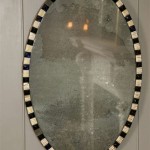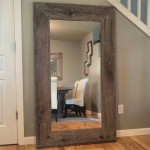Screen Mirror Laptop to TV via Chromecast
Chromecast offers a convenient way to stream and mirror content from a laptop to a larger television screen. This functionality enhances presentations, entertainment experiences, and collaborative work. This article outlines the methods and considerations for successfully mirroring a laptop screen to a TV using Chromecast.
Method 1: Mirroring from the Chrome Browser
The simplest way to mirror a laptop screen to a TV with Chromecast is directly through the Google Chrome browser. Chrome has built-in casting capabilities, eliminating the need for additional applications or software. This method allows mirroring of the entire browser window or a specific tab.
To initiate mirroring, open the Chrome browser and click the three vertical dots in the upper right corner (the "More" menu). Select "Cast..." from the dropdown menu. A list of available Chromecast devices will appear. Select the desired Chromecast device connected to the TV. Users can then choose to cast the current tab or the entire desktop. Choosing "Cast desktop" mirrors the entire laptop screen, while "Cast tab" only mirrors the content of the selected tab.
Method 2: Mirroring through the Google Home App
While casting from the Chrome browser is sufficient for many scenarios, the Google Home app provides more granular control and settings for mirroring. The Google Home app is available for both Android and iOS devices and manages various smart home devices, including Chromecast.
After installing and setting up the Google Home app, ensure the laptop and the Chromecast device are connected to the same Wi-Fi network. Open the Google Home app and select the Chromecast device. The app interface will present various options, including screen mirroring. Tap the "Cast my screen" button. The laptop screen will then be mirrored to the TV.
Optimizing the Mirroring Experience
Several factors influence the quality and smoothness of screen mirroring. Addressing these considerations can optimize the experience and minimize potential issues.
Network Connection
A strong and stable Wi-Fi connection is essential for optimal screen mirroring performance. A weak or inconsistent Wi-Fi signal can lead to lag, buffering, or disconnections. Ensure both the laptop and the Chromecast device are connected to the same network and ideally within close proximity to the router for the best possible connection.
Laptop Performance
The laptop's processing power and graphics capabilities also play a role in mirroring performance. Demanding tasks or resource-intensive applications running on the laptop might impact the smoothness of the mirrored display. Closing unnecessary programs and reducing background processes can help improve mirroring performance.
Chromecast Generation
Different Chromecast generations offer varying levels of performance. Newer Chromecast devices typically support higher resolutions and frame rates, resulting in a smoother and more detailed mirroring experience. Consider upgrading to a newer Chromecast device for improved performance if necessary.
Troubleshooting Common Issues
Occasional issues can arise during screen mirroring. Some common troubleshooting steps can help resolve these problems.
Black Screen or No Signal
If a black screen appears on the TV or there's no signal, verify the Chromecast is properly connected to both the TV and the power source. Restarting the Chromecast device or the laptop can often resolve this issue. Also, check that the correct input source is selected on the TV.
Lagging or Buffering Video
If the mirrored video lags or buffers frequently, check the network connection. Moving the laptop closer to the router or reducing the number of devices connected to the network might improve performance. Lowering the video resolution on the mirrored content can also alleviate lag.
Audio Sync Issues
If the audio isn't synchronized with the video, try restarting both the Chromecast and the laptop. Adjusting the audio delay settings within the mirroring application or the laptop's sound settings might also help resolve the issue.
Alternative Mirroring Methods
While Chromecast provides a convenient way to mirror a laptop screen, alternative methods exist, such as using HDMI cables for a direct connection. These alternatives may offer advantages in specific scenarios, especially when dealing with high-bandwidth content or environments with unreliable Wi-Fi.

Mirror Your Computer To Tv With Chromecast

How To Mirror Pc Tv With Google Chromecast Istreamer

How To Tutorials Screen Mirror Pc Or Laptop Tv Using Chromecast

Connecting Laptop To The Tv With Just A Few Simple Steps Resource Centre By Reliance Digital

How To Use Chromecast Cast Your Entire Desktop Tv

Screen Mirroring A Phone Ipad Or Laptop To Tv How Push Your The Big

How To Use Chromecast Screen Mirroring On Pc Tv Desktop Tutorial

11 Screen Mirroring Devices For Presenting Wirelessly Computerworld

Screen Mirror Mac To Chromecast Free Trial App Airbeamtv

How To Screen Mirror Stream Laptop Pc Tv Wireless No Adapters








